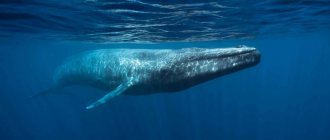Any living creature needs rest to restore the body's strength. This is how nature intended it. Sleep is necessary for everyone - birds, mammals, any higher-order animal, which includes us - humans. We are accustomed to associate sleep with a state of complete relaxation and stillness. This is exactly how almost all representatives of a highly organized sauna sleep.
It is common for lions to sleep on their backs for most of the day. Elephants in Africa tend to doze while standing for two to three hours. Long-legged giraffes curl up to rest.
But how does a dolphin sleep? After all, no one had ever seen him motionless. These amazing animals always move in the water with extraordinary ease and grace. It seems that they are awake around the clock, and a sleepy state is not characteristic of them in principle.
But this assumption is incorrect, which has finally been proven by modern scientific research.
How do dolphins breathe?
We humans hardly ever think about our breathing - for us this process is natural. But for dolphins, things are a little more complicated. Every 5 or 10 minutes, any of the dolphins needs to surface to replenish their oxygen supply, which implies coherence between the muscles and the brain.
Everyone has long known that a dolphin is not a fish, but a real mammal. Moreover, they are considered secondary aquatic mammals. That is, their ancestors initially existed in the water element, but over time they mastered the land and were able to breathe with the help of their lungs. The reasons why such animals return to the water element are unknown to scientists.
Such mammals, unlike fish, do not have organs or devices that allow them to breathe underwater. That is, they do not have gills. To stock up on air for breathing, the dolphin needs to surface.
Description and characteristics
Dolphins lead a social lifestyle and do not tolerate loneliness well. They usually form small groups of 5-8 individuals, but in some varieties the number of flocks can reach several tens or even hundreds of animals.
Despite the fact that there is no hierarchy in the group and one clear leader, all the actions of the dolphins living together are coordinated. Recent research has shown that these marine mammals have a social consciousness, the ability to sympathize and help their young and weaker relatives. Perhaps this is why dolphins come to the aid of people who are drowning or in danger during a shark attack.
The main way to obtain information from dolphins is to analyze sound waves. The sensitivity level of their inner ear ranges from 10 Hz to 196 kHz, which is a record high among all animals existing on the planet. For echolocation, the dolphin uses only infrasound waves.
Like any predator at the top of the food chain, dolphins are important in nature: by hunting schools, they regulate the rate of growth and maturation of fish, and also ensure natural selection in populations.
How do they breathe
Despite the fact that dolphins live in water, they are not fish that receive oxygen through gills, but mammals that breathe air. The respiratory system of animals has the following specific features:
- the point of inhalation and exhalation is the blowhole located in the upper part of the head, which is covered by a skin-muscular fold during immersion in water;
- the esophagus and respiratory tract are permanently separated, the larynx has two muscular valves that prevent the entry of water;
- the lungs are very elastic and elastic, which allows up to 90% of the air to be renewed in one breath (in humans - no more than 15%).
Dolphins are able to go without air for 7-10 minutes, after which they rise to the surface for another breath. That is why they sleep near the surface of the water, alternately maintaining the activity of one of the hemispheres of the brain.
What does it look like
The appearance of the dolphin has the following features:
- The body is elongated, gradually tapering towards the tail.
- The caudal fin is horizontal, divided by a notch into two lateral lobes, the dorsal fin has the shape of a triangle, and there are two pectoral fins in the lower part of the body.
- The neck is shortened, the jaws form a rostrum or beak; in some species (long-snouted, narrow-snouted dolphins, bottlenose dolphins) it is noticeably extended forward.
- The skin is elastic, the surface is covered with fatty enzymes that ensure rapid movement in water.
Adaptation to the habitat in dolphins is manifested in the structure of the fins (a well-developed dorsal fin gives increased stability in the water, and the caudal and lateral fins that change the elasticity allow for high speed of movement), the streamlined shape of the body, and the smoothness of the skin.
The color can be solid or spotted. The color scheme is dominated by grey, black, blue, white and blue shades.
Dimensions and weight
The dolphin family includes more than 30 species. The average sizes of some varieties are presented in the table below.
| Type name | Body length, m | Weight, kg |
| killer whale | 10 | 8000 |
| Grey | 4 | 500 |
| Long-snouted common whitetail | 2,5 | 200 |
| Dark | 2 | 90 |
| Motley | 1,7 | 60 |
| Chinese river dolphin Beiji | 1,4 | 42 |
How many years do they live
Striped The average lifespan of dolphins in nature is 20-40 years.
Among the known long-lived species are the striped dolphin and the common pilot whale: some individuals of these species can live up to 50-60 years. Despite the fact that dolphins are highly trainable and easily interact with humans, their lifespan in captivity is significantly shorter than in natural conditions. The age of animals kept in captivity is reduced by at least half. In this regard, on the initiative of ecologists and environmental organizations in the UK, France, Canada, Australia and many other countries, dolphinariums were banned, as well as the keeping of small marine mammals in captivity, including beluga sturgeons and pinnipeds.
But this assumption is incorrect, which has finally been proven by modern scientific research.
Respiratory organs of dolphins
Consequently, while leading the life of a sea dweller, the dolphin continues to breathe with its lungs. It has a special valve that the dolphin opens when approaching the water surface. Having exhaled and inhaled, the animal closes the valve and carries a fresh portion of oxygen under water. This process is quite complex for the body and is practically impossible in a sleepy state.
However, the resulting portion of air is enough, as mentioned above, for five to ten minutes. For many years, biologists have been occupied with a very obvious question - how does a dolphin sleep in this mode, because the time intervals through which this mammal must surface to get a portion of atmospheric oxygen are quite short.
Questions, questions...
Many versions have been put forward. The most extreme of them argued that dolphins do not need sleep at all, that is, they are never in this state. According to another theory, they are characterized by a short rest between ascents to the surface.
Do dolphins sleep at all? For a long time, these animals were considered somnambulists, resting in a state of muscle tension and with their eyes open. It was also believed that they are characterized by periods of sleep in short intervals between inhalation and exhalation, and they awaken from chemical changes in the composition of the stored portion of oxygen.
Some scientists attributed automatic actions to dolphins, like sleepwalkers. To determine the true state of affairs, studies were organized that involved recording the biocurrents of the dolphin brain.
Sea sleepwalking
Dolphins, unlike land animals, cannot afford to sleep motionless, as they need to constantly float to the surface. Therefore, cetaceans are able to do unique things - sleep and move at the same time.
Sleeping in a motionless state is available only to large and fat killer whales - they reach 6 tons in weight, such a reserve of subcutaneous fat allows you not to worry about heat loss. Fat also provides better buoyancy. Small cetaceans, whose weight is less than 100 kg, are forced to actively move - these are Azov whales, killer whale calves, and Commerson's dolphins.
How a dolphin sleeps - a word to science
This procedure is very difficult. The animals had to be placed in a pool, and electrodes were implanted into their brains. The signals sent were recorded using radio waves, which made it possible for the dolphins to lead their usual lifestyle.
The work was carried out at the Black Sea biological station by researchers from the Academy of Sciences. To finally find out how dolphins sleep, Soviet scientists A. Ya. Supin and L. M. Mukhametov, representatives of the Institute of Evolutionary Morphology and Animal Ecology, organized observation of mammals, which was carried out both in enclosures and in an open pool.
Several specimens of bottlenose and azov dolphins were selected for implantation of electrodes into the brain. The animals were given the opportunity to frolic as usual, during which an electroencephalogram of the brain was recorded using a radio signal. The resulting picture made it possible to monitor the activity of each of his hemispheres.
What happened?
Scientists were simply shocked by the results of the study. It turned out that complete immersion in sleep is not typical for dolphins. That is, their brain remains active continuously. The discovery was that his hemispheres literally sleep in turns. Each of them receives a portion of full-fledged normal sleep for about 6 hours throughout the day. At intervals of an hour or an hour and a half, a replacement occurs when the opposite hemisphere goes into sleep.
The most interesting thing is that during such a dream a dolphin can behave as if nothing had happened - swim, hunt, and so on. So it is hardly possible for outside observers to determine with the naked eye whether a given individual is currently sleeping or not.
Tu-134 crash in Kuibyshev
In 1986, the aircraft commander, Alexander Klyuev, bet with the co-pilot that he could land the plane “blindly,” relying only on instrument readings.
Before landing, he closed the cabin windows with a curtain and led the plane to land.
Klyuev lost the bet. The plane crashed. Of the 94 people on board, 24 survived, the rest died.
How does a dolphin sleep - are its eyes open or not?
Almost everyone, both people and animals, close their eyes in their sleep. What about the dolphins? In full accordance with the alternate wakefulness of each hemisphere! That is, one eye of a sleeping dolphin is always closed.
Why do dolphins sleep with one eye open? Even before the study, many people noticed that dolphins often have one eye closed, but no one had previously thought of linking this with sleep. Thus, as a result of the study, a real scientific sensation was born.
It turns out that nature gave dolphins a truly magical opportunity to simultaneously rest and be awake. That is, complete and deep sleep, like in other mammals - with both hemispheres of the brain switched off - never occurs in dolphins.
Unsafe cars
In 2014, General Motors recalled 800,000 vehicles (mostly the Chevrolet Cobalt and Pontiac G5) due to ignition problems. The cars turned off while driving, so drivers could not control or brake them. The airbags also did not deploy.
The manufacturer has known about the problem since 2005, but never fixed the problem because it was "too expensive."
Negligence led to the death of 124 people.
What does it look like
Now you and I understand how a dolphin sleeps. Each hemisphere takes turns keeping its watch. Then they change places. The active hemisphere goes into sleep, the opposite hemisphere begins to stay awake. When the dolphin's sleep stage passes, both hemispheres are activated.
This evolutionary mechanism is provided by nature for the purpose of survival of the species. Constantly awake one of the hemispheres solves the problem of delivering oxygen to the brain and prevents the danger of choking.











